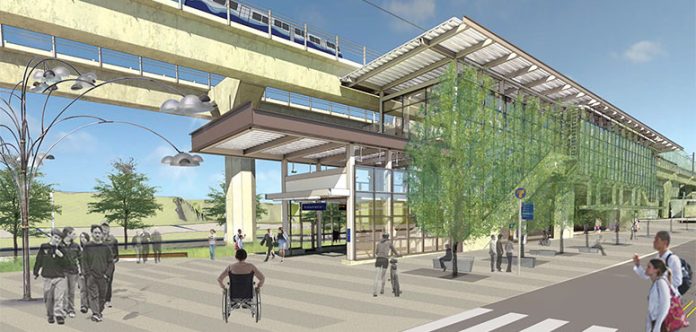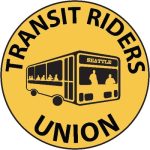The letter below is from the Seattle Transportation Coalition and was signed by Seattle Subway, the Seattle Transit Riders Union, and The Urbanist. Other groups have adopted similar talking points in their own letters to Sound Transit, to encourage Sound Transit to plan Sound Transit 3 (ST3) investments with extreme attention to expandability, accessibility, equity, and reliability issues.
*****
To: Peter Rogoff, Sound Transit CEO
From: Seattle Transportation Advocates Coalition
Date: May 16, 2018
Re: Priorities for ST3 Investments
Sound Transit is executing an expedited project delivery timeline to deliver Ballard and West Seattle extensions and a new downtown tunnel. This work is critical and will impact our city and region for a century to come. It is critical we make great decisions in partnership with the local affected communities and potential system customers, with a shared vision and an eye toward the future city these lines will be constructed in, not just what exists now.
Our priorities below are driven mainly by an interest in avoiding missed opportunities. These are written after consultation throughout the community and with each other striving toward a common goal: a system we all can be proud of. This is the most audacious transit expansion in the country, and these investments are intensely important: we must do them right.
Principle 1 – Expandability: ST3 must be built for the future and not hamstring our ability to grow.
1.A) The Sound Transit Board must live up to the will of the voters regarding number of stations. Cutting stations anywhere, especially in the densest areas, is not a viable, forward-thinking option.
1.B) Our incremental system growth has a flaw: we build stations and lines as if new lines will not be added in the future. The 2014 Long Range Plan (LRP) does not reasonably outline all future expansion options over the 100-year life of the system. A future station in Tukwila on a Burien-Renton line or U District Station serving a crosstown Ballard to U-District line are examples of this issue. We entreat the Sound Transit board to complete a new Long Range Plan process by 2020 to ensure system expandability is factored into every station design that could serve future lines. Areas where future expansion consideration is a factor:
- Ballard terminus (acknowledged in LRP)
- West Seattle terminus (acknowledged in LRP)
- 99/Harrison South Lake Union Station to North along 99 (not acknowledged in LRP)
- Midtown Station (not acknowledged in LRP)
- South of SODO Station (not acknowledged in LRP)
Principle 2 – Accessibility: Design the system to invite people in and maximize ridership
2.A) Our Union Station/King Street Station has an opportunity to be a world class hub. It will be the highest-volume station north of San Francisco and west of Chicago. Currently it is underutilized and poorly connected. Further, it is not integrated with the local community–which already has social equity concerns. This necessitates the construction impacts be mitigated and the outcome be of sufficient quality to benefit the community. We must invite people (residents and riders) into our world class system. Therefore:
- Sound Transit must find ways to activate Union Station. It’s critical to ask the question from the beginning: how do we make an amazing hub?
- Connections between the light rail station and regional rail systems must be world class. Riders are going to have increasing choices. This must be a place where people want to be and where the connections are easy, convenient and safe. Crossing a six-lane road at surface level does not meet this standard.
- Options to construct a tunnel west of 5th Avenue must be thoroughly explored and vetted in a transparent manner. All communities have had multiple varied options provided. Chinatown/ID deserves the same.
2.B) The current plan does not provide any options to improve mobility in SODO. More than 60% of employees in this area, adjacent to downtown, drive by themselves to work. ST’s plan does nothing to change this, let alone prepare for a future that could involve more employees. While there may be concern about impacting freight with construction, we believe the Port and other partners are forward-thinking enough to realize that zero high capacity transit options along the densest portions of SODO will impact freight even more due to an unending line of cars. Providing zero options in SODO lacks vision and could undermine Seattle’s economic capacity for decades to come.
- ST must provide additional alternatives in SODO that increase the walkshed and bikeshed in this area vital to Seattle’s economy.
- ST should consider ways to place the new SODO station closer to where the people are, meaning closer to 1st Avenue. The current alignment is in the center of where the people are not.
- ST should consider a Stadium Station location that is actually next to the Stadium.
2.C) High quality bus/rail/bike/walk integration is essential and prioritization of multimodal connections is critical.
- This requires integrated transit hubs that set the standard for the nation. Stations must be planned to optimize transit connections at the outset. We are operating and building a truly great rail system, yet our community lacks local examples of great bus/rail integration. Opportunities to resolve this with critical bus/rail integration are available at Ballard, Delridge, Alaska Junction, Chinatown/IDS/Union/King St Station, and Harrison/99 SLU Station. Doing so will aid a downtown that is over-capacity on buses while at the same time inviting more people to ride transit.This means connecting stations to the citywide bike network and facilitating bikeshare trips.
- This also means not eliminating the E3 bike trail.
- Bicycle end of trip facilities must be integrated into stations along the corridor. Capacity and parking type must meet existing need for secure, on-demand bicycle parking–and be designed to expand as demand grows during the station lifetime.
2.D) The approximately $86 million in access investments allocated for the West Seattle-Ballard corridor needs to be secured solely for this purpose.
- It is important that this fund not be considered a contingency fund or an amenity for the project.
- Parking for motor vehicles should be delinked from this fund.
- The project needs to emphasize a robust design process for access and active transportation at the onset to maximize the utility of these funds.
2.E) A First Hill station alignment must be adequately studied in level 2 analysis. It offers an opportunity to expand the market of those with access to high quality transit. In 50 years, or even in year one, we will severely regret missing the opportunity to serve the highest density residential community and highest density healthcare center if it is possible within the budget to serve. If ST can cut First Hill in Sound Move, it can add First Hill to ST3 given there is just three blocks variance from the representative alignment and downtown already has robust service.
2.F) Building a great system involves working with partners. While ST is making great effort to work with partners, elimination of options that require partnership with arbitrary application of “not consistent with ST3 plan” (example: SODO alternatives) does not serve the community best. This includes options that could be feasible, and better serve the community, through partnership and community collaboration. We advise ST to let the community decide and work with the community to serve it best.
2.G) Do a racial equity analysis so it is clear Sound Transit’s investments are equitably distributed.
2.H) Fully pursue the Sound Transit Equitable Transit-Oriented Development Framework, which was recently passed, so that community participation starts from the beginning of the station area development process.
Principle 3 – Reliability: Our multi-billion dollar investment must be built to the maximum reliability standard. As the spine of our transit system, people have to be able to rely on it.
3.A) Because future expansions could mean higher frequency on the Ballard line, the Salmon Bay Crossing over the Lake Washington Ship Canal to Ballard must not be a bridge that is subject to opening.
As we have begun to discuss our priorities with other advocacy, business, and community groups, we’ve been pleasantly surprised by how much overlap there is in our goals. This is an really great sign, it means that the community is starting to move towards consensus on what really matters about ST3. We encourage you to message the Sound Transit Board of Directors at EmailTheBoard@soundtransit.org. You can email individual members of the West Seattle/Ballard Link Extension Elected Leadership Group listed below:
Seattle Councilmember Bruce Harrell
King County Executive Dow Constantine
Snohomish County Executive Dave Somers
Seattle Councilmember Rob Johnson
Seattle Councilmember Lisa Herbold
Seattle Councilmember Lorena Gonzalez
King County Councilmember Joe McDermott
Seattle Councilmember Mike O’Brien
Seattle Councilmember Sally Bagshaw
Seattle Port Commissioner Stephanie Bowman
A Better Transit Hub for People: Union Station Should See Trains Once Again




